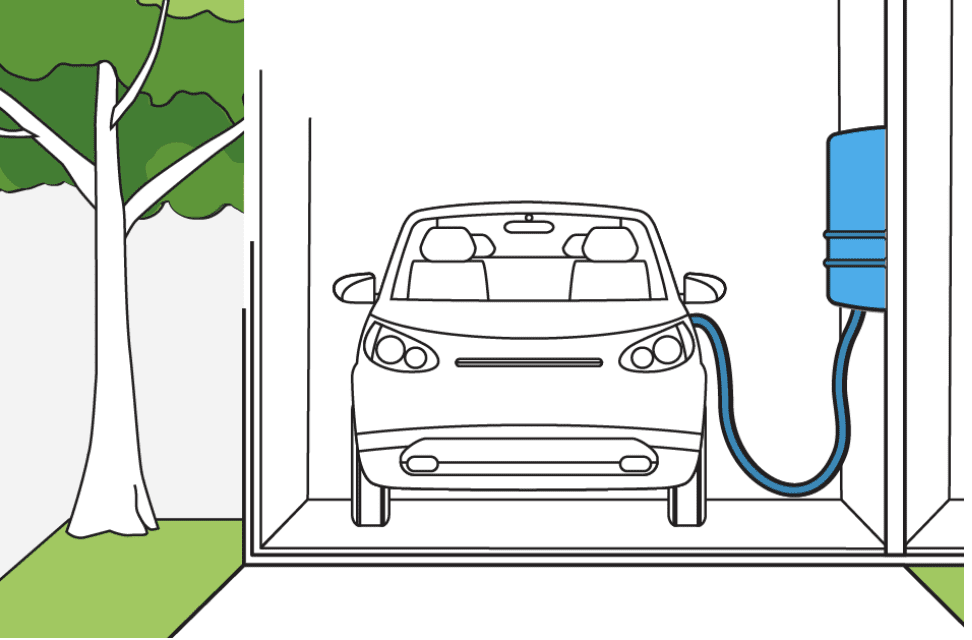Aug 25, 2023
Understanding EV-Ready Requirements in Codes for Homeowners and Builders
The decision to embrace EV readiness in homes and buildings comes with a wide range of benefits that make the transition to electric mobility more appealing than ever.
By: Dragana Thibault

Imagine returning home after a long day, connecting your electric vehicle (EV) to your own charging station, and waking up the next morning with a fully charged car, ready to take you wherever you need to go. EV readiness in both homes and buildings offers this convenience and the ability to reduce greenhouse gas emissions.
The automotive industry is undergoing a remarkable transformation with the growing popularity of EVs. Beyond captivating and sophisticated car designs, there is a profound reason for their rise. EVs are not only eco-friendly but also offer exceptional performance and lower operational costs. As society embraces the concept of electric mobility, it becomes imperative to establish an extensive, national EV charging infrastructure network.
Understanding EV-Ready Code Provisions
The International Energy Conservation Code (IECC) sets the standards for energy-efficient building practices in the United States. It is updated every three years to incorporate new advancements in technology and to address emerging environmental concerns. With the 2024 revision, the IECC intends to introduce a pivotal requirement: all new residential and commercial construction and major renovations must include the infrastructure necessary for commercial and residential EV charging. This requirement entails integrating necessary electric infrastructure during the construction or renovation phase to facilitate the seamless installation of EV charging stations in the future. The infrastructure consists of sufficient electrical capacity, an appropriately-sized electrical panel, a dedicated branch circuit, conduit, and wiring from the panel to the future EV charging station.
Some states have already taken proactive measures and have incorporated EV-Ready requirements into their building codes, while many others are expected to follow soon. The increasing presence of EV-Ready provisions in building codes is expected to play a crucial role in the transition towards widespread adoption of electric vehicles and reducing carbon emissions nationwide. There are several critical factors that might drive state decisions to incorporate EV-Ready requirements into building codes:
Simplifying Retrofits
Retrofitting existing homes with EV charging infrastructure can be challenging and costly. Requiring new homes to be EV-Ready will spare homeowners from significant retrofitting expenses in the future.
Accelerating EV Adoption
As the popularity of EVs surges, it becomes essential to ensure that the necessary charging infrastructure is readily available. EV-Ready homes will encourage more people to embrace electric mobility, therefore reducing reliance on fossil fuels.
Enhancing Accessible and Efficient Charging Infrastructure
With charging infrastructure integrated into residential properties, EV owners will gain access to home charging, reducing reliance on public charging networks and ensuring a reliable and convenient charging experience. This, in turn, will take pressure off of public charging infrastructure.
Reducing Greenhouse Gas Emissions
Encouraging EV adoption and convenient at-home charging will significantly decrease carbon emissions and improve air quality for all.

Whether you are a homeowner or a builder embarking on a new construction project, here are some critical aspects to keep in mind. To begin, consider taking the time to determine the optimal charging location within your property. Accessibility, convenience, and weather protection should be among the key factors to consider when choosing the perfect spot. In addition, it is essential to ensure that your home’s electrical system can handle the additional load of not less than 6.2 kVA (or 30A at 208/240V). While concerns about the electric grid’s capacity are understandable, in a recent study, the U.S. Department of Energy concluded that the national electric grid is expected to be available to support the growing EVs.
Benefits for Homeowners and Builders: Embracing EV Readiness
The decision to embrace EV readiness in homes and buildings comes with a wide range of benefits that make the transition to electric mobility more appealing than ever. Governments and utilities across the United States are stepping up to support the adoption of EVs by offering various grants, incentives, and rebates for commercial and residential charging infrastructure. Many of these incentive programs are specifically assisting disadvantaged communities, offering low- or even no-cost EV charging installations to break down barriers for residents in these communities to join the sustainable mobility movement. Homeowners and builders can explore those opportunities to offset the costs of installing EV charging, making the switch to electric mobility more financially viable. Moreover, choosing to put in place the necessary infrastructure by installing EV supply equipment during initial construction or major renovation, while leveraging the available funding programs, will help both cut costs and ensure a home is well-prepared for embracing electric mobility.
Beyond the financial benefits, EV-Ready homes also gain a competitive edge in the real estate market. With a growing demand for a lifestyle that reduces carbon footprints, EV-Ready homes become a selling point, attracting environmentally conscious homebuyers eager to embrace electric mobility. As the positive environmental impacts of EVs heavily rely on the energy sources powering them, a grid dominated by fossil fuels can compromise their overall benefits. However, even in such circumstances, EVs remain a cleaner transportation option compared to combustion engine vehicles. As the grid continues to transition to clean, renewable energy sources, the long-term benefits of EVs and their accompanying charging infrastructure will continue to amplify, ultimately leading to a more clean transportation system. The synergy between environmental responsibility, financial incentives, and market demand presents an exciting opportunity for stakeholders in the pursuit of a greener, more electrifying future.
This article was originally published in the NEEP blog and is republished with permission.





